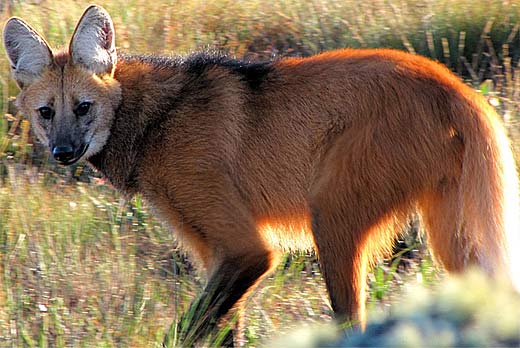Maned Wolf – Long Legs With Red Fox Head
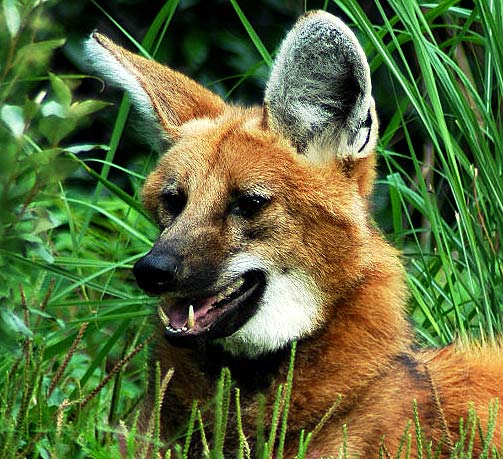
Classified by wildlife experts as a “near threatened” species, the somewhat at risk of being endangered maned wolf is the largest species of canid in all of South America. In the countries of Brazil, Paraguay, Argentina, Bolivia, Peru, and Uruguay, this species known for its long legs and fox-like appearance can be found living in grasslands and other semi-open habitats that contain bushes and trees. Their legs are so long they sometimes appear at a distance like something of a horse with a fox’s head.
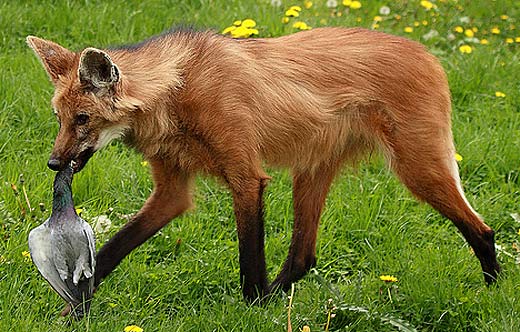
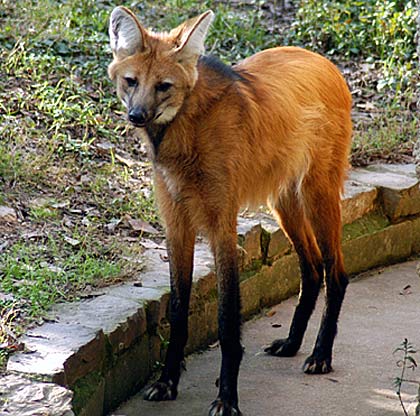
Posing no real danger to humans because of their skittish nature, maned wolves are still imposing looking creatures; standing 42 inches (107 centimeters) tall, and weighing up to 75 pounds (34 kilograms), they are generally larger than most domestic dogs. Despite this size advantage, they’re not particularly known for attacking household pets, and in fact are in greater danger from larger family dogs, who have been known to attack them or pass on disease to them.
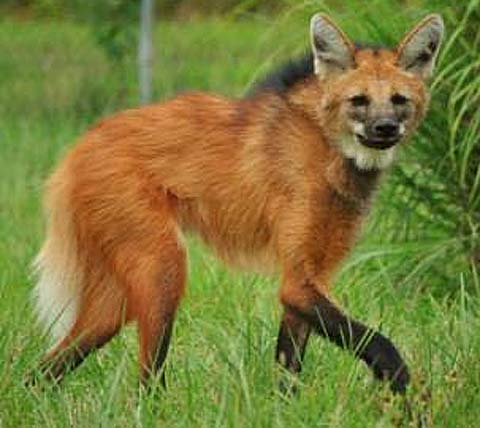
In the wild, their diet consists of medium-sized prey like rabbits and fish, as well as fruits and vegetables. This balanced diet prevents them from getting kidney stones, a fact learned by zookeepers who made the mistake of only feeding captive specimens meat. Unlike other wolves, the maned species doesn’t form packs, but instead hunts alone and occasionally defends territory with a monogamous mate. However, even when mated, these wolves will only really come together to breed or when under attack. Like other dogs, they do use their urine (which has a pungent smell) to mark their territorial zone so that individuals are aware of each others presence.
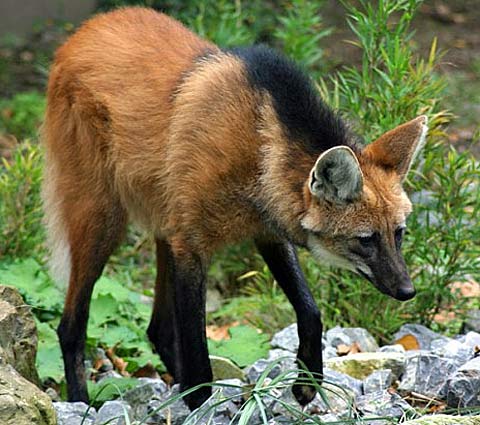
Maned wolves are a valuable part of their ecosystem, as they often carry the seeds of the plants they feed on, spreading them during defecation and insuring the plant strains longevity. The main reason that their population isn’t at full strength is habitat loss. This has put them in situations where they are run over by vehicles or killed by interactions with domestic animals. Because of this, local governments have undertaken conservation efforts in order to ensure the survival of the species.
